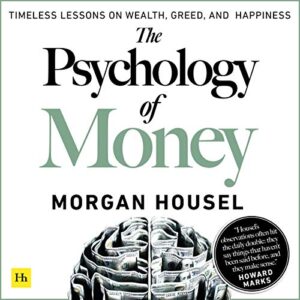Thinking, Fast and Slow” by Daniel Kahneman | Summary
The book investigates how people make selections by utilizing two mental systems: System 1 and System 2. System 1 operates quickly, intuitively, and emotionally, whereas System 2 operates slowly, rationally, and logically. System 1 works automatically and frequently without our knowledge, yet it is prone to biases and errors. System 2 necessitates more effort and attention, yet it can fix System 1’s errors and accomplish complex tasks. However, System 2 is frequently sluggish and relies on System 1 for the majority of judgments and decisions.
The book is divided into five sections, each focusing on a different aspect of human intellect and decision-making. The first section describes the two systems and their attributes, as well as some of System 1’s common errors and illusions, such as the halo effect, confirmation bias, and replacement heuristic. The second section examines how we estimate probabilities and frequencies using heuristics (mental shortcuts) and anchors (reference points), as well as how this can lead to overconfidence and error. The third portion looks at how we deal with uncertainty and danger, as well as how we are influenced by our emotions, loss aversion, and framing effects. The fourth section introduces Kahneman’s prospect theory, which he developed with his colleague Amos Tversky and challenges the classical economic theory of rational choice. The prospect theory explains how people value gains and losses differently, and how the endowment effect, certainty effect, and possibility effect affect them. The fifth section delves into the distinctions between experiencing and remembering selves, as well as how they affect our well-being and happiness. The book concludes with some implications and recommendations for better thinking and decision-making.
The following are some of the key concepts taught in the book:
- The difference between System 1 and System 2 modes of thought: System 1 is quick, intuitive, and emotional, whereas System 2 is slow, rational, and logical. System 1 frequently makes mistakes and has biases, whereas System 2 can correct them and perform complex tasks. System 2 is, however, lazy and relies on System 1 for most judgments and choices.
- The impact of heuristics and anchors on our probabilistic and frequency estimates: Heuristics are mental shortcuts that aid in decision making, but they can also lead to overconfidence and miscalculation. Anchors are points of reference that influence our decisions, even if they are irrelevant or arbitrary.
- Uncertainty and risk play a role in our decision-making: When faced with uncertainty and risk, we frequently rely on our emotions, loss aversion, and framing effects. We prefer to avoid losses rather than seek gains, and our decisions are influenced by how options are presented to us.
- Prospect theory, which contradicts classical economic theory of rational choice: The prospect theory demonstrates how different people value gains and losses depending on the reference point and probability. We are also influenced by the endowment, certainty, and possibility effects, which cause us to behave inconsistently and irrationally.
- The distinction between experiencing and remembering selves, and how they influence our well-being and happiness: The experiencing self is the one who lives in the present moment and feels its pleasures and pains. Remembering self is the one who maintains our memories and narrates our stories. The two selves frequently have opposing preferences and assessments of the same occurrences.
In conclusion, this book is groundbreaking and thought-provoking, providing a deep and fascinating look at how we think and make judgments. The author’s findings and insights are based on decades of research in behavioral economics and cognitive psychology. The book instructs us on the two systems that govern how we think: System 1 and System 2. System 1 is quick, intuitive, and emotive, whereas System 2 is deliberate, slow, and rational. The book exposes the incredible potential of fast thinking, as well as its flaws and biases, and how they affect our judgments and choices in both our personal and professional lives. The book also provides practical and illuminating insights into how understanding and controlling the two systems can help us improve our thinking and decision-making. The book is engaging, rigorous, and easy to read, and it will change how you think about thinking.
Our team is pleased to provide you with a direct link to access the complete audible version of the book. We understand the value of convenience and accessibility and we strive to deliver the best resources to meet your needs. Please feel free to utilize this link at your discretion.

